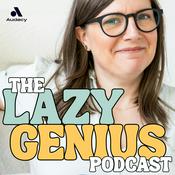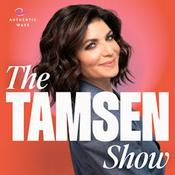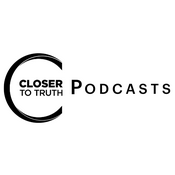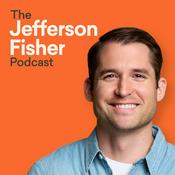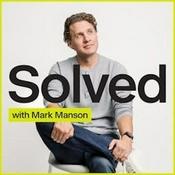302 episodes

The Surprising Connection Between Online Views and Church Growth
17/10/2025 | 24 mins.
Apply to Join Churchfront Premium Apply to Join Churchfront Pro Free Worship and Production Toolkit Shop Our Online Courses Join us at the Churchfront Conference Follow Churchfront on Instagram or TikTok: @churchfront Follow on Twitter: @realchurchfront Gear we use to make videos at Churchfront Musicbed SyncID: MB01VWQ69XRQNSN Episode Title The Surprising Connection Between Online Views and Church Growth Episode Description Matt and Jake dive into The Unstuck Group's Q3 2025 report analyzing 252 churches to uncover surprising connections between worship style, online streaming, and church growth. Discover why declining churches juggle multiple worship styles, how online views predict growth, and why the cost barrier for quality streaming has never been lower. Key Takeaways 76% of surveyed churches now focus on modern/contemporary worship only Churches with multiple worship styles are more likely to be declining 96% of churches now offer online services (up from ~20% pre-COVID) Online views are a lead indicator for church growth 40% of online church viewers are first-time visitors The broadcast section is typically the smallest part of AV budgets Audio quality matters more than video quality for streaming Guest/Host Info Hosts: Jake Gosselin and Matt Woltjer from Churchfront Timestamps 0:00 Introduction: The Unstuck Group Q3 2025 Report Overview 1:11 76% of Churches Now Offer Only Modern/Contemporary Worship 3:52 Declining Churches Juggle Multiple Worship Styles 6:07 Living in the Tension: Traditional vs. Contemporary 7:42 Excellence in Worship - Both Styles Can Work 10:12 Vision is Essential - Don't Lead What You Don't Believe In 12:02 Your Space Dictates Your Style Limitations 14:09 Contemporary Worship = More Online Engagement 15:51 96% of Churches Now Offer Online Services 17:01 The Cost of Broadcasting Has Decreased Dramatically 19:36 Online Streaming Doesn't Hurt In-Person Attendance 20:47 Online Views as a Lead Indicator for Growth 22:50 40% of Online Viewers are First-Time Visitors 23:07 Audio First - The Key to Quality Streaming Resources Mentioned The Unstuck Group Q3 2025 Report ChurchTechToday Gitnux First Baptist Melbourne (traditional excellence example) Elevation Church (contemporary excellence example) Rock Harbor Church (historical building renovation example) Discussion Questions for Church Leaders Does your church currently offer multiple worship styles? What challenges has that created? How can your church pursue unity while honoring different generational preferences? If you're not currently streaming, what barriers are holding you back? How can you improve your online presence as a "front door" for visitors? Action Steps Review your church's online metrics - are views increasing or decreasing? Assess whether multiple worship styles are helping or hindering unity Evaluate your streaming setup - is audio quality your top priority? Consider how your building design supports or limits your worship style goals Social Media Pull Quotes "Churches trying to maintain multiple worship styles are much more likely to be declining. It's not about one style being better—it's about strategic leadership." - Jake & Matt "96% of churches now stream online, and here's the kicker: online views are a lead indicator for growth. If your views are increasing, you're likely a growing church." - Jake & Matt "People will watch bad video with good audio, but they won't watch bad audio with good video. Audio first, always." - Matt Woltjer "Your online stream isn't competing with in-person attendance—it's your front door. 40% of online viewers are first-time visitors researching your church." - Jake Gosselin "The worship wars are over. Now it's time to be one church with one vision, not two churches meeting in the same building." - Jake & Matt Episode Tags #ChurchGrowth #WorshipStyle #LiveStreaming #ChurchTechnology #TheUnstuckGroup #ContemporaryWorship #TraditionalWorship #ChurchAV #OnlineChurch #ChurchLeadership Production Notes Include link to The Unstuck Group report in description Add affiliate disclosure if applicable Consider creating supplementary graphics showing the key statistics Potential follow-up: Interview with The Unstuck Group team about their methodology

Leading with Thick Skin and a Soft Heart with Kent Morris
26/9/2025 | 26 mins.
Apply to Join Churchfront Premium Apply to Join Churchfront Pro Free Worship and Production Toolkit Shop Our Online Courses Join us at the Churchfront Conference Follow Churchfront on Instagram or TikTok: @churchfront Follow on Twitter: @realchurchfront Gear we use to make videos at Churchfront Musicbed SyncID: MB01VWQ69XRQNSN

Live Streaming Mix SECRETS with Kent Morris
15/9/2025 | 58 mins.
Apply to Join Churchfront Premium Apply to Join Churchfront Pro Free Worship and Production Toolkit Shop Our Online Courses Join us at the Churchfront Conference Follow Churchfront on Instagram or TikTok: @churchfront Follow on Twitter: @realchurchfront Gear we use to make videos at Churchfront Musicbed SyncID: MB01VWQ69XRQNSN

How to Have HARD Conversations with Your Worship Team
15/9/2025 | 26 mins.
Apply to Join Churchfront Premium Apply to Join Churchfront Pro Free Worship and Production Toolkit Shop Our Online Courses Join us at the Churchfront Conference Follow Churchfront on Instagram or TikTok: @churchfront Follow on Twitter: @realchurchfront Gear we use to make videos at Churchfront Musicbed SyncID: MB01VWQ69XRQNSN

The Secret Chords Your Worship Music is Missing
12/9/2025 | 25 mins.
Apply to Join Churchfront Premium Apply to Join Churchfront Pro Free Worship and Production Toolkit Shop Our Online Courses Join us at the Churchfront Conference Follow Churchfront on Instagram or TikTok: @churchfront Follow on Twitter: @realchurchfront Gear we use to make videos at Churchfront Musicbed SyncID: MB01VWQ69XRQNSN
More Education podcasts
Trending Education podcasts
About Churchfront Podcast
Listen to Churchfront Podcast, 6 Minute English and many other podcasts from around the world with the radio.net app

Get the free radio.net app
- Stations and podcasts to bookmark
- Stream via Wi-Fi or Bluetooth
- Supports Carplay & Android Auto
- Many other app features
Get the free radio.net app
- Stations and podcasts to bookmark
- Stream via Wi-Fi or Bluetooth
- Supports Carplay & Android Auto
- Many other app features


Churchfront Podcast
download the app,
start listening.












